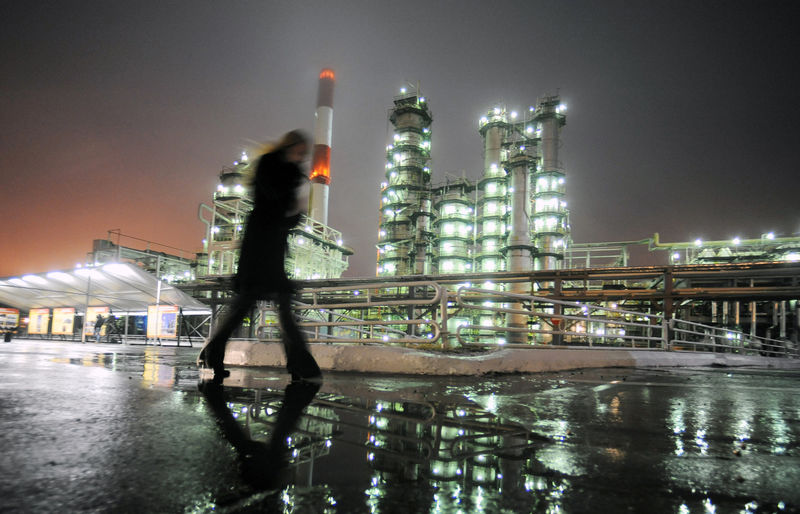© Reuters. FILE PHOTO-Douaa Idris, who fled Syria with her husband and two children after surviving a chemical weapons attack in 2017, gestures as she speaks during an interview with Reuters in Gaziantep,Turkey, February 14, 2023. REUTERS/Thaier Al-Sudani
2/3
By Maya Gebeily
GAZIANTEP, Turkey (Reuters) – After surviving a chemical attack in Syria, Douaa Idris, her husband and two children fled across the border to southern Turkey where they painstakingly rebuilt their lives as refugees.
“We were born again,” said Idris, 32, who put down roots in the city of Gaziantep alongside 450,000 Syrians escaping the conflict that has ravaged their homeland.
Their new world came crashing down on Feb. 6.
Two massive earthquakes shattered the fragile existence of Syria’s diaspora in Turkey and left many in despair about having to piece their lives together yet again, somehow, somewhere.
For Idris, the natural disaster was no less of a turning point than the human tragedy of war and, for the first time since leaving Syria, her family is considering moving further away from their homeland, to Europe or the Gulf.
“We say, what was before the uprising and what was after the uprising,” she told Reuters in her apartment in a block with cracks down the outside. “Now, there’s before the earthquake, and after the earthquake.”
The disaster struck just over a month before Syrians marked 12 full years since protests broke out in their homeland against President Bashar al-Assad, part of the broader Arab Spring rebellions that toppled a string of autocratic leaders.
The popular uprising in Syria spiralled into a complex conflict that has killed hundreds of thousands of people, sucked in major powers and carved up the country into rival zones of control.
Assad stayed in power. But hundreds, then thousands, then millions of Syrians fled north into neighbouring Turkey, where they were given temporary protection status.
As the refugee population swelled, so did their host cities.
Hotels sprung up in Antakya to host reporters and aid workers, Syrian restaurants and cafes opened in Gaziantep and dozens of Syrian civil society groups, media outlets and political organisations set up their bases in southern Turkey.
A DOUBLE BLOW
Syrian exiles sent money back to their families at home, sometimes visited them on holidays using temporary Turkish permits and organised aid distributions during the cold winter months or around Muslim holidays.
“It was as if we were running northern Syria, but remotely,” said Idris,” who works with Amal Organisation for Relief and Development, an NGO that helps create safe spaces for women and girls inside Syria.
But they also grew attached to their new home towns.
Alaadin, a shopkeeper from the northern city of Aleppo, said living in Gaziantep made him feel he was close to home.
“We chose it because it’s close to Aleppo as an environment and as a people – to the point that we used to say Aleppo is Antep, and Antep is Aleppo,” he told Reuters.
That proximity is precisely what dealt Syrians a double blow when the quakes struck.
Not only were their families in Syria once again stuck under rubble, this time thanks to the ground shaking below rather than bombs from above, but the exiled community that had been the backbone for those at home was suffering the same calamity.
The quakes killed more than 50,000 people in Turkey and Syria, including about 5,800 Syrians at home, according to government and United Nations figures, and another 4,200 in Turkey, according to the country’s interior minister.
The Turkish areas hardest hit – historic Antakya, urban Gaziantep, sprawling Kahramanmaras and the smaller industrial zones sprinkled between – were the closest to the Syrian border.
The area hosted some 1.5 million Syrians, according to the U.N., nearly half of the Syrian refugee population in Turkey.
BURIED IN TURKEY
For the first time, Idris’s organisation had to provide help to Syrian women and girls on the Turkish side of the border too.
“Syrians will come back. Syrians are strong. But how many scars will this leave?” she said.
The quakes took the life of prominent Syrian women’s rights advocate Raeifa Samie, who died in the Turkish city of Hatay. She had been a member of a committee advising peace talks on women’s inclusion and was working on Syria’s new constitution.
Award-winning Syrian journalist Yamaan Khatib – known for his documentaries about life in rebel-held Idlib – died alongside his wife, their three children, and his other relatives in their Hatay home as well.
Syrian aid workers lost relatives both in Syria and Turkey, or had to sleep in warehouses for days as their homes had been badly damaged.
A month on, half the staff at the Gaziantep office of Syrian relief organization Ihsan were still stuck in other cities, said its executive director Baraa al-Samoodi.
Ihsan has been based in Gaziantep since 2014, coordinating assistance in northern Syria including deliveries of food and shelter, repairs to water networks and farming projects.
Its office was damaged in the earthquake but repaired a few weeks later.
“We’d always been making contingency plans for our offices and our teams in Syria. Now it’s clear we also needed one for Turkey,” Samoodi told Reuters.
For many Syrian refugees, the earthquake crushed their hopes of ever returning to their homeland. For others, death only finalised their exile.
Syrian businessman Zaher Kharbotly, 43, had to bury his two sisters and their children in the Turkish town of Kirikhan, where they had been living.
“Their bodies were in no condition to be taken across,” said Kharbotly, who had hoped they could be buried in their native province of Idlib. “All those kids were born, they died, and they were buried here in Turkey.
DEEPER INTO EXILE
Since the quake, more than 40,000 Syrians living in Turkey have crossed back into Syria to check on family or escape what they described as Turkey’s difficult atmosphere.
With anti-refugee sentiment on the rise and their futures uncertain, many were re-considering staying in Turkey anyway.
In the stadium-turned-displacement camp in the heart of Kahramanmaras, former maths teacher Suad al-Asmar paced outside the white tent that is now her only shelter.
“I can’t believe we’re back in the camps again,” said Asmar, who had spent years in camps on both sides of the border before settling in Kahramanmaras with her husband and four children.
But their modest home, and the factory that once employed her husband, were reduced to rubble – and Asmar now fears her children’s futures are dashed.
“They were all in school, getting ready to go to university. But now of course they will have to work so we can survive,” she told Reuters.
About 1.7 million Syrian children were refugees in Turkey, according to 2021 data from the United Nations, with more than a million in school.
Asmar’s teenage daughter Joudy had hoped to study architecture. Outside their tent, she scrolled through snapshots of her drawings on her phone, her sketchpad stuck in the ruins of their home.
“What are you going to draw now – destroyed streets?” one of her former neighbours – another Syrian teen also sheltering in the new tent city – taunted playfully.
Tears welled up in Joudy’s eyes.
Like Idris, Asmar is no longer sure there’s much to live for in a country that had once offered them a second chance.
“I made that house our home and it’s just gone. I don’t think I’ll even buy a tea cup for the next place we settle – it could just be gone in an instant,” she told Reuters.
“I always thought we would just stay here. But now I’m ready to leave.”
















